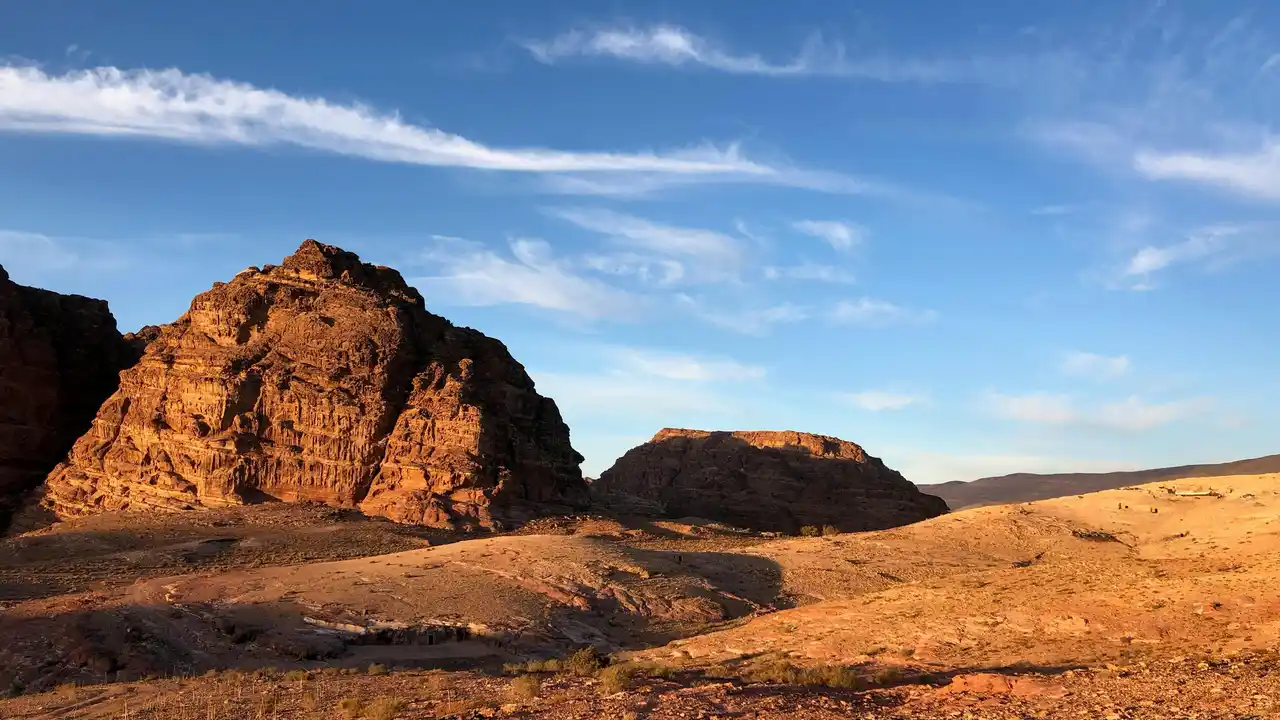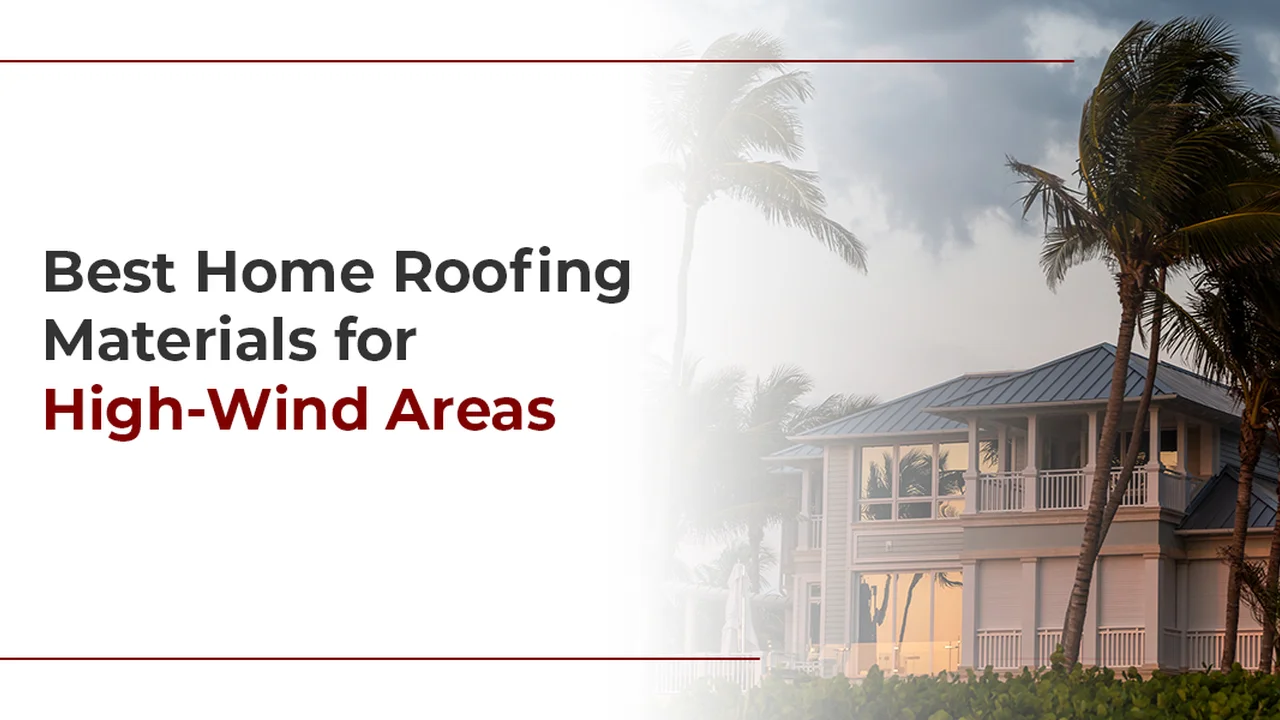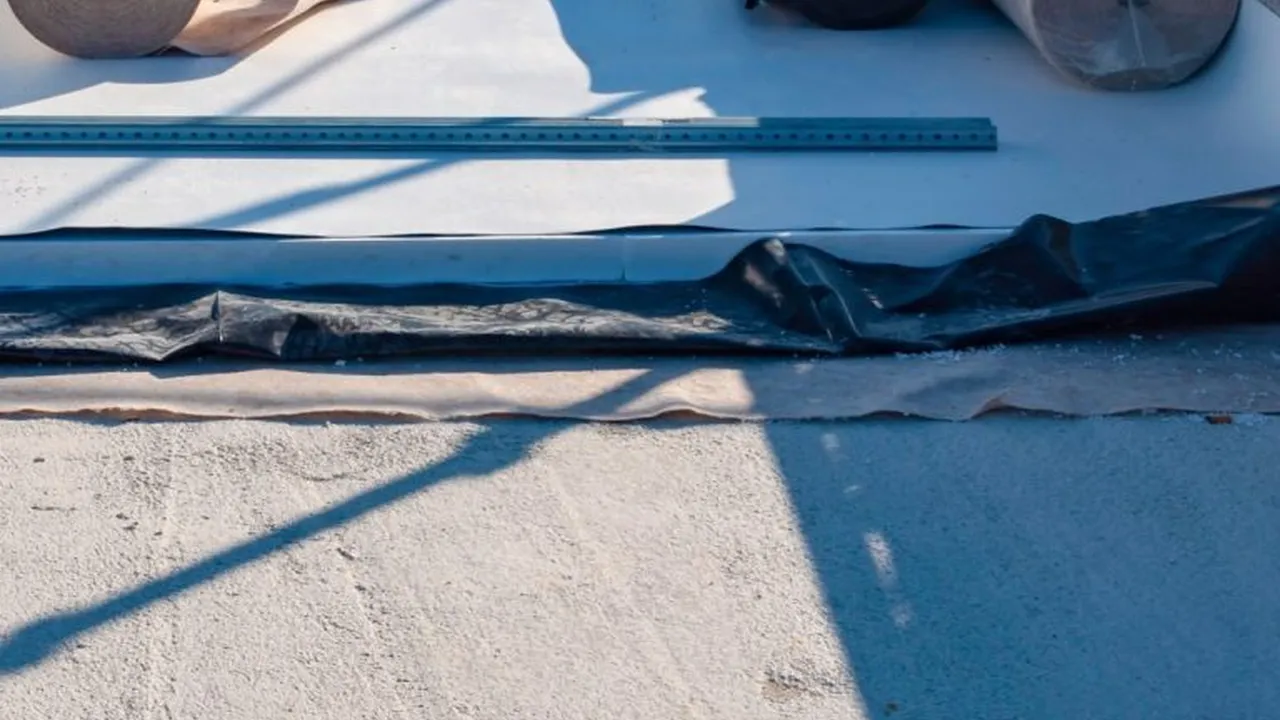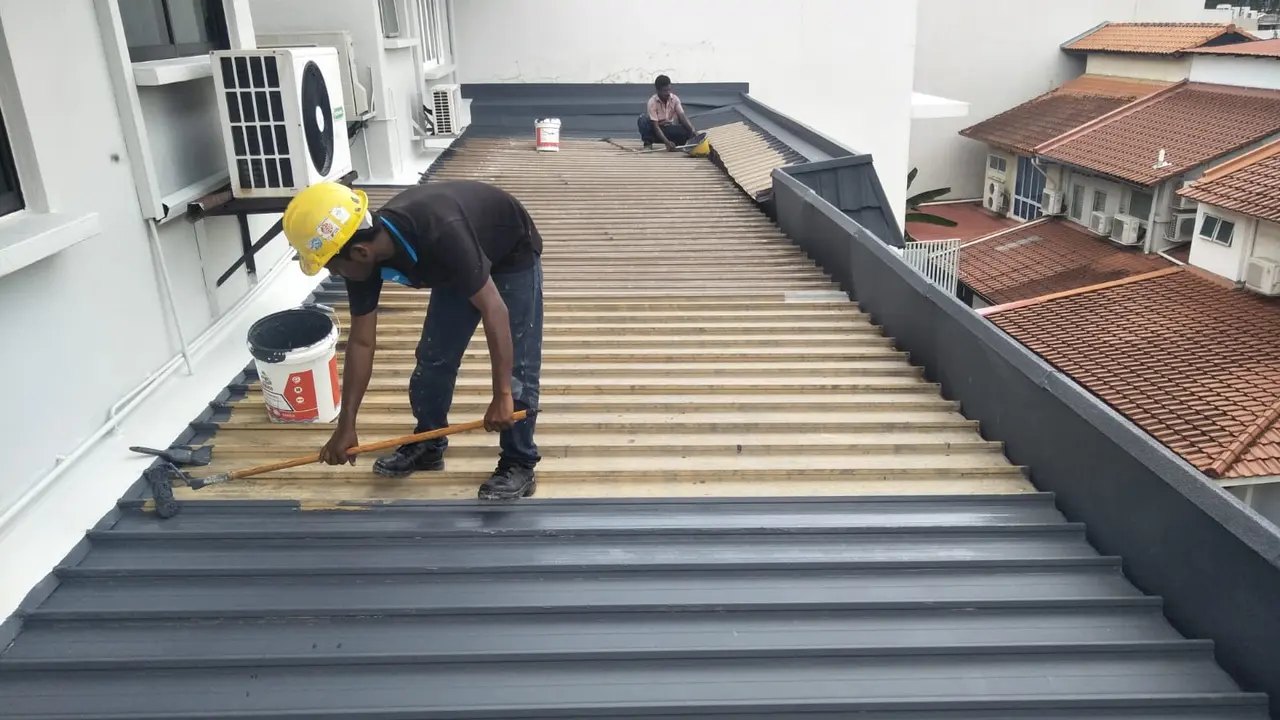Desert Climate Roofing Strategies
Discover effective roofing strategies and materials ideal for homes in desert climates, focusing on heat reflection.

Discover effective roofing strategies and materials ideal for homes in desert climates, focusing on heat reflection. Living in a desert climate presents unique challenges for homeowners, especially when it comes to roofing. The relentless sun, extreme temperatures, and occasional dust storms demand a roofing system that can withstand these harsh conditions while keeping your home cool and energy-efficient. This guide will walk you through the best roofing strategies and materials specifically designed for desert environments, helping you make an informed decision for your home.
Desert Climate Roofing Strategies
Understanding Desert Climate Challenges for Your Roof
Desert climates, characterized by high daytime temperatures, significant temperature drops at night, intense UV radiation, and often arid conditions, put immense stress on roofing materials. The primary challenges include:- Extreme Heat Absorption: Dark-colored roofs absorb a tremendous amount of solar radiation, transferring heat into your attic and living spaces, leading to higher cooling costs.
- UV Degradation: Constant exposure to ultraviolet rays can break down roofing materials, causing them to crack, fade, and become brittle over time.
- Thermal Shock: The drastic temperature swings between day and night cause materials to expand and contract repeatedly, leading to fatigue and premature failure.
- Dust and Sand Abrasion: Wind-blown dust and sand can abrade roof surfaces, especially during storms, reducing their lifespan.
- Water Scarcity and Flash Floods: While arid, deserts can experience intense, short-duration rainfall leading to flash floods, requiring effective water shedding.
Key Roofing Strategies for Desert Homes
To combat these challenges, several strategic approaches are crucial for desert roofing:Prioritizing Heat Reflection and Emissivity for Energy Efficiency
This is perhaps the most critical strategy. A roof that reflects solar radiation and emits absorbed heat efficiently will significantly reduce the heat gain in your home. This is where 'cool roofs' come into play. Cool roofs use materials that are highly reflective (reflecting sunlight away) and highly emissive (releasing absorbed heat quickly).Ensuring Superior UV Resistance for Longevity
Materials must be inherently resistant to UV degradation. This means choosing products that won't break down or become brittle under constant sun exposure, maintaining their structural integrity and aesthetic appeal for longer.Accommodating Thermal Expansion and Contraction
Selecting materials and installation methods that can gracefully handle the daily expansion and contraction cycles is vital. This prevents cracking, warping, and fastener pull-out, which are common issues in desert environments.Robust Wind and Dust Resistance for Durability
While not always the first thought, desert regions can experience strong winds and dust storms. Your roofing system needs to be securely fastened and durable enough to resist abrasion and uplift.Effective Water Management for Rare but Intense Rains
Even in arid regions, when it rains, it often pours. A well-designed roof must efficiently shed water to prevent pooling and potential leaks, especially given the dry conditions that can make materials more susceptible to sudden moisture.Top Roofing Materials for Desert Climates
Let's dive into the specific materials that excel in desert environments, considering their properties, pros, cons, and typical applications.Cool Roof Coatings and Membranes for Existing Roofs
If you have an existing roof that's in good condition but struggling with heat, a cool roof coating can be a cost-effective solution. These are typically acrylic or silicone-based elastomeric coatings applied over various substrates.- Pros: Significantly reduces roof surface temperature, lowers cooling costs, extends roof lifespan, relatively inexpensive compared to full replacement.
- Cons: Requires proper surface preparation, may need reapplication after several years, effectiveness depends on application quality.
- Product Recommendations:
- Henry Tropi-Cool 887 Silicone Roof Coating: A highly reflective and durable silicone coating. It's 100% silicone, meaning it's resistant to ponding water and UV degradation. Ideal for low-slope or flat roofs. Price: Approximately $300-$400 per 5-gallon bucket, covering about 500 sq ft.
- Gaco Western GacoRoof 100% Silicone Roof Coating: Similar to Henry, GacoRoof offers excellent reflectivity and durability. It's a popular choice for DIY and professional applications. Price: Around $350-$450 per 5-gallon bucket, covering about 500 sq ft.
- Use Case: Best for flat or low-slope roofs (e.g., commercial buildings, residential flat roofs, mobile homes) where heat absorption is a major issue. Can be applied over existing asphalt, metal, or single-ply membranes.
Metal Roofing for Extreme Durability and Reflectivity
Metal roofs are an excellent choice for desert climates due to their inherent reflectivity, durability, and ability to withstand extreme temperatures.- Pros: Highly reflective (especially lighter colors), excellent longevity (50+ years), fire-resistant, wind-resistant, low maintenance, can be made from recycled materials.
- Cons: Higher upfront cost than asphalt shingles, can be noisy during heavy rain (though less common in deserts), potential for denting from hail (less of an issue in most deserts).
- Product Recommendations:
- Standing Seam Metal Roof (e.g., from Sheffield Metals, McElroy Metal): These systems feature concealed fasteners, offering superior weather resistance and a sleek, modern look. Available in various colors, with lighter shades offering higher reflectivity. Price: $10-$18 per square foot installed.
- Stone-Coated Steel Tiles (e.g., Decra, Boral Steel): These combine the durability of steel with the aesthetic appeal of traditional tiles. They are lightweight, highly resistant to wind and fire, and offer good reflectivity. Price: $8-$15 per square foot installed.
- Use Case: Ideal for both residential and commercial properties seeking a long-term, low-maintenance, and energy-efficient solution. Suitable for various roof pitches.
Clay and Concrete Tiles for Traditional Aesthetics and Thermal Mass
Tile roofs, particularly clay and concrete, have been used in hot climates for centuries. Their thermal mass helps to slow down heat transfer, and their natural ventilation properties can be beneficial.- Pros: Extremely durable (50-100 years), excellent fire resistance, good thermal mass (slows heat transfer), aesthetically pleasing, resistant to UV degradation.
- Cons: Very heavy (may require structural reinforcement), higher upfront cost, can be brittle and break if walked on improperly, less reflective than light-colored metal or coated roofs.
- Product Recommendations:
- Boral Roofing Clay Tiles (e.g., Barcelona, Saxony): Offer a classic Mediterranean look, excellent durability, and natural ventilation. Available in various colors, including lighter, more reflective options. Price: $8-$20 per square foot installed.
- Eagle Roofing Products Concrete Tiles (e.g., Capistrano, Bel Air): A more affordable alternative to clay, offering similar benefits in terms of durability and thermal mass. Wide range of colors and profiles. Price: $6-$15 per square foot installed.
- Use Case: Homes where a traditional or Mediterranean aesthetic is desired, and where the structure can support the weight. Good for moderate to steep slopes.
Single Ply Membranes TPO and PVC for Flat or Low Slope Roofs
For flat or low-slope roofs common in some desert architecture, TPO (Thermoplastic Polyolefin) and PVC (Polyvinyl Chloride) single-ply membranes are excellent choices due to their inherent reflectivity and durability.- Pros: Highly reflective (especially white TPO/PVC), excellent UV resistance, durable, resistant to punctures and tears, relatively lightweight, heat-welded seams provide superior waterproofing.
- Cons: Less aesthetically pleasing for visible sloped roofs, can be more expensive than asphalt for flat roofs, installation requires specialized equipment and expertise.
- Product Recommendations:
- GAF EverGuard TPO: A leading brand for TPO membranes, known for its energy efficiency and durability. Available in white, gray, and tan, with white being the most reflective. Price: $6-$12 per square foot installed.
- Sika Sarnafil PVC: Sarnafil is a premium PVC membrane known for its exceptional longevity, flexibility, and resistance to chemicals and fire. Often used in demanding applications. Price: $8-$15 per square foot installed.
- Use Case: Primarily for commercial buildings, but also suitable for residential flat roofs, carports, and low-slope sections of homes.
Asphalt Shingles with Cool Roof Technology
While traditional dark asphalt shingles are generally not recommended for desert climates due to heat absorption, manufacturers now offer 'cool' asphalt shingles with reflective granules.- Pros: More affordable upfront cost, wide range of styles and colors, relatively easy to install, some cool shingles meet ENERGY STAR requirements.
- Cons: Shorter lifespan than metal or tile (typically 20-30 years), still absorb more heat than dedicated cool roof materials, less resistant to extreme UV and thermal shock than other options.
- Product Recommendations:
- GAF Timberline Cool Series: These architectural shingles incorporate highly reflective granules to reduce heat absorption. Available in several lighter, reflective colors. Price: $4-$7 per square foot installed.
- CertainTeed Landmark Solaris: Another popular cool shingle option, designed to reflect solar energy and reduce attic temperatures. Price: $4-$7 per square foot installed.
- Use Case: Homeowners on a tighter budget who still want some level of heat reflection, or for homes where the aesthetic of traditional shingles is strongly preferred. Best for sloped roofs.
Installation Best Practices for Desert Roofing
Even the best materials won't perform optimally without proper installation. Here are some key considerations:Adequate Attic Ventilation for Heat Dissipation
Proper attic ventilation is crucial in desert climates. It allows hot air to escape from the attic, preventing heat buildup and reducing the load on your HVAC system. This works in conjunction with a cool roof to keep your home comfortable.Using High Quality Underlayment for Added Protection
Invest in a high-quality synthetic underlayment. These offer superior protection against moisture, UV degradation, and thermal expansion compared to traditional felt paper. Some even have reflective properties.Proper Fastening Techniques for Wind Resistance
Ensure that all roofing materials are fastened according to manufacturer specifications and local building codes, especially considering potential high winds and dust storms. This includes using the correct type and number of fasteners.Considering a Radiant Barrier in the Attic
A radiant barrier installed in the attic can significantly reduce radiant heat transfer from the roof deck into the attic space. This is a highly effective strategy when combined with a cool roof material.Maintenance Tips for Desert Roofs
Even the most durable desert roof requires some attention to ensure its longevity and performance:Regular Inspections for Early Problem Detection
Conduct annual inspections, or after any significant weather event, to check for cracked tiles, loose fasteners, damaged coatings, or debris accumulation. Early detection can prevent minor issues from becoming costly repairs.Keeping the Roof Clean from Dust and Debris
While not as prone to moss or algae, desert roofs can accumulate dust and sand, which can reduce the reflectivity of cool roof surfaces. Periodically cleaning the roof (safely) can help maintain its energy efficiency.Addressing Minor Repairs Promptly to Prevent Escalation
Don't delay small repairs. A cracked tile or a small tear in a membrane can quickly lead to water intrusion and more extensive damage, especially during those rare but intense desert downpours.Making Your Decision for a Desert Roof
Choosing the right roofing strategy for your desert home involves balancing upfront costs, long-term energy savings, durability, and aesthetic preferences. Consider these factors:- Budget: While some materials have higher initial costs, their longevity and energy savings can lead to a lower total cost of ownership.
- Home Style: The architectural style of your home might influence your material choice (e.g., tiles for Mediterranean, metal for modern).
- Local Climate Nuances: While generally desert, some areas might have slightly more rain or higher wind events, influencing material selection.
- Energy Efficiency Goals: If reducing cooling costs is a top priority, focus heavily on highly reflective and emissive materials.
- Professional Consultation: Always consult with experienced local roofing contractors who understand the specific challenges of desert climates. They can provide tailored recommendations and ensure proper installation.
:max_bytes(150000):strip_icc()/277019-baked-pork-chops-with-cream-of-mushroom-soup-DDMFS-beauty-4x3-BG-7505-5762b731cf30447d9cbbbbbf387beafa.jpg)






